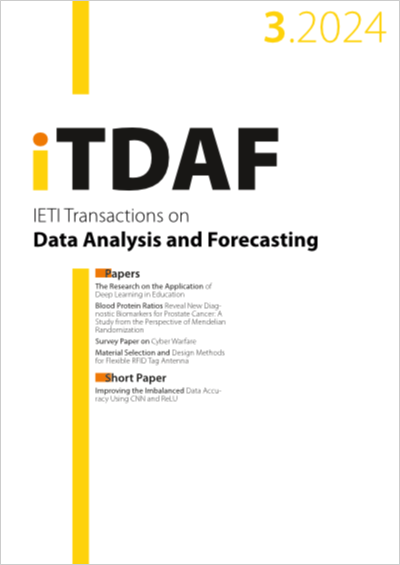Blood Protein Ratios Reveal New Diagnostic Biomarkers for Prostate Cancer: A Study from the Perspective of Mendelian Randomization
DOI:
https://doi.org/10.3991/itdaf.v2i3.51637Keywords:
Prostate cancer, blood protein ratios, Mendelian randomization, genetic variants, diagnosis, treatment, biomarkersAbstract
Prostate cancer (PCa) is a leading malignancy affecting men globally, contributing significantly to cancer-related morbidity and mortality. Our study aims to explore causal relationships between blood protein ratios (BPR) and PCa using a Mendelian randomization (MR) approach, potentially identifying new diagnostic and therapeutic targets. Methods: A two-sample MR method was employed, utilizing genetic variants as instrumental variables (IVs) to infer causality between circulating BPR and PCa. Data on BPR were obtained from a proteomics study of the UK Biobank, while PCa data were sourced from FinnGen, the PRACTICLE Consortium, and the GWAS Catalog. Stringent criteria were applied for IV selection, and statistical analyses included the inverse-variance weighted (IVW) method with sensitivity analyses to address pleiotropy and heterogeneity. Results: Significant causal associations were identified between several BPR and PCa. Notably, the ratios of CEBPB/PXN, APBB1IP/NCF2, APP/EGF, and CRKL/ EGF were found to be protective against PCa, while the ratios of ARHGAP1/RAD23B, EGF/ TNFSF14, and GOLM2/STC1 were identified as risk factors. Reverse MR analysis suggested that PCa might act as a protective factor for the GOLM2/STC1 ratio. Sensitivity analyses confirmed the robustness of these findings. Conclusions: This study elucidates significant causal relationships between 7 BPR and PCa, offering new insights for diagnosis, treatment evaluation, and personalized therapeutic strategies. Future research should focus on validating these findings and exploring the underlying biological mechanisms to improve PCa management.
Downloads
Published
How to Cite
Issue
Section
License
Copyright (c) 2024 Zikang Jiang, Jinghui Sung, Weijie Li, Yixin Zhuang, Yuanpeng Huang

This work is licensed under a Creative Commons Attribution 4.0 International License.


